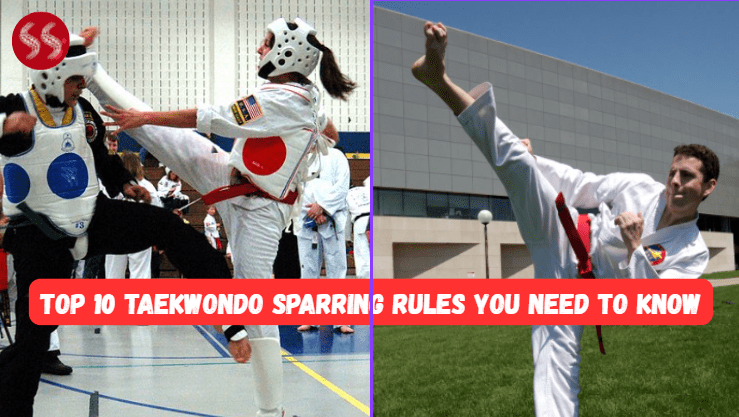Taekwondo sparring, or gyeorugi, is a high-speed, strategic game of timing, skill, and power. It is the most visible and exciting part of the martial art, captivating audiences with lightning-fast kicks and dynamic footwork. While the action on the mat is thrilling, it’s the complex set of rules that governs the flow of the match, ensures fair play, and defines who is crowned the winner. For a beginner, the whirlwind of points and penalties can be confusing, but understanding the fundamentals is the key to both competing and appreciating the sport. This definitive guide to the Top 10 Taekwondo Sparring Rules is designed to demystify the competition, providing a clear roadmap to the core principles that dictate success.
The rules of Taekwondo have evolved significantly over the years, particularly with the introduction of technology like electronic scoring systems. These changes have made the sport faster and more objective, but they have also added new layers of complexity that a student must learn. Knowing when to attack, when to defend, and what actions will result in a penalty is a strategic skill in itself. Our list of the Top 10 Taekwondo Sparring Rules will break down the essential regulations, from the scoring system to the types of fouls and how they impact a match.
This is the ultimate guide for anyone who wants to go from spectator to an informed participant, making sense of the fast-paced world of competitive Taekwondo. Mastering these rules is just as important as mastering your kicks, which is why this is the definitive list of the Top 10 Taekwondo Sparring Rules.
10. The Scoring System
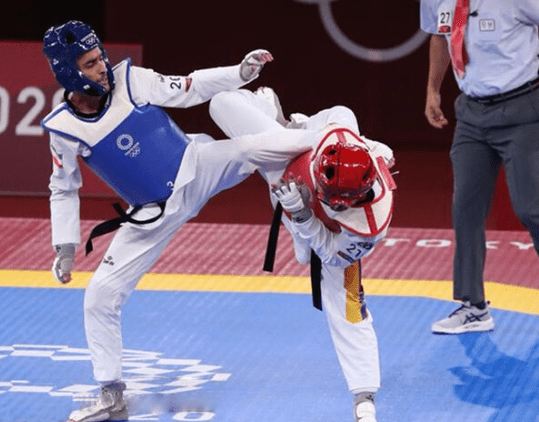
The scoring system is the most fundamental aspect of any Taekwondo match. Points are awarded for valid strikes to an opponent’s legal scoring areas. A kick to the body protector (hogu) is worth two points, while a kick to the head is worth three points. A kick that spins is awarded an extra point, making a spinning kick to the head worth five points. A punch to the body protector is worth one point. Understanding these values is the first step to developing a winning strategy, which is why this is a crucial entry among the Top 10 Taekwondo Sparring Rules.
The introduction of electronic body protectors has revolutionized scoring, making it more objective and accurate. The sensors in the protector automatically register a valid strike and award the points to the attacker. This technology has largely eliminated human error in scoring and has made the sport much fairer. The ability to quickly score points is what separates a good fighter from a great one. The scoring system is the most important of all the Top 10 Taekwondo Sparring Rules.
| Stat | A kick to the head is worth three points, making it a high-risk, high-reward attack in competitive Taekwondo |
9. Legal Scoring Areas

Taekwondo sparring has very specific legal scoring areas on an opponent’s body. These areas are the trunk (torso) and the head. A strike to any other part of the body, such as the legs or arms, will not be awarded a point. The legal scoring area on the trunk is defined as the front and sides of the body, covered by the body protector. The head area is any part of the head, including the face and the back of the head. Knowing these areas is key to developing a scoring strategy, a fundamental part of the Top 10 Taekwondo Sparring Rules.
The rules around legal scoring areas are designed to ensure the safety of the athletes. Striking other areas can lead to serious injury, and the rules are in place to prevent that. The legal scoring areas are a critical component of any match, and understanding them is a key part of mastering the sport. This is an essential entry on our list of the Top 10 Taekwondo Sparring Rules. The focus on safe scoring is a key element of the Top 10 Taekwondo Sparring Rules.
| Stat | The most common legal scoring area for a beginner is the trunk, as it is a large and easy-to-hit target. |
8. Match Structure
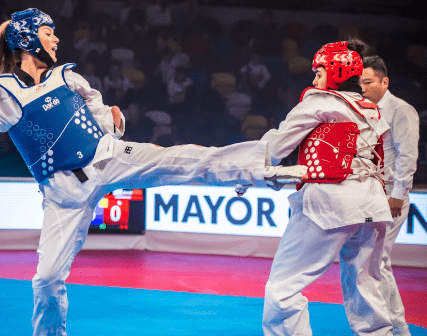
A standard Taekwondo match is divided into three rounds, with each round lasting two minutes. There is a one-minute break between each round to allow the athletes to rest and for their coaches to give them instructions. The match is a test of a fighter’s endurance and their ability to maintain their focus for the entire duration. Understanding the structure is a key part of developing a winning strategy, which is why this is a crucial entry on our list of the Top 10 Taekwondo Sparring Rules.
The three-round structure is designed to be a test of a fighter’s skill and their ability to adapt to a changing match. A fighter may be down in the first round but can come back to win in the third. The match structure is a critical component of any match, and understanding it is a key part of mastering the sport. This is an essential entry on our list of the Top 10 Taekwondo Sparring Rules. The duration of the match is a defining aspect of the Top 10 Taekwondo Sparring Rules.
| Stat | The total duration of a standard Taekwondo match is six minutes of fighting and two minutes of rest, for a total of eight minutes. |
7. Kyong-go (Warning) Penalties

Kyong-go, or warning penalties, are a minor infraction in Taekwondo sparring. A Kyong-go penalty is given for a variety of offenses, such as pushing an opponent, stepping out of the ring, or avoiding a fight. A Kyong-go is a warning, and two of them result in a Gam-jeom (deduction) point for the opponent. Understanding these minor penalties is a key part of a winning strategy, which is why this is a crucial entry on our list of the Top 10 Taekwondo Sparring Rules.
The rules around Kyong-go penalties are designed to keep the match moving and to ensure a high level of competition. A fighter who is constantly pushing or avoiding a fight will be penalized, and this can be a game-changer. The Kyong-go penalties are a critical component of any match, and understanding them is a key part of mastering the sport. This is an essential entry on our list of the Top 10 Taekwondo Sparring Rules. The penalty system is a key part of the Top 10 Taekwondo Sparring Rules.
| Stat | The most common Kyong-go penalty is for “avoiding a fight,” which is a sign of a fighter who is not willing to engage with their opponent. |
See More :
6. Gam-jeom (Deduction) Penalties

Gam-jeom, or deduction penalties, are a major infraction in Taekwondo sparring. A Gam-jeom penalty is given for a variety of serious offenses, such as a kick to the knee, a punch to the face, or a direct strike to a fallen opponent. A Gam-jeom results in an immediate point deduction for the offender. Understanding these major penalties is a key part of a winning strategy, which is why this is a crucial entry on our list of the Top 10 Taekwondo Sparring Rules.
The rules around Gam-jeom penalties are designed to ensure the safety of the athletes. A fighter who is constantly striking an opponent’s knee or face will be penalized, and this can be a game-changer. The Gam-jeom penalties are a critical component of any match, and understanding them is a key part of mastering the sport. This is an essential entry on our list of the Top 10 Taekwondo Sparring Rules. The seriousness of these penalties is a defining element of the Top 10 Taekwondo Sparring Rules.
| Stat | If a fighter receives 10 Gam-jeom penalties in a match, they are automatically disqualified. |
5. The Use of Electronic Protectors
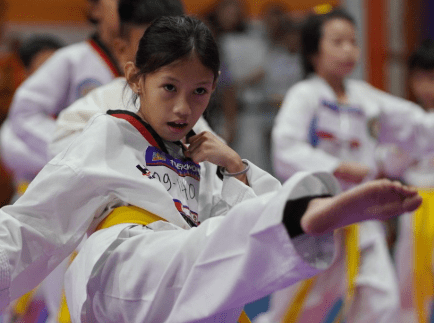
Electronic protectors are a key component of modern Taekwondo sparring. These protectors are equipped with sensors that automatically register a valid strike and award the points to the attacker. This technology has largely eliminated human error in scoring and has made the sport much fairer. The use of electronic protectors is a key part of modern Taekwondo, which is why this is a crucial entry on our list of the Top 10 Taekwondo Sparring Rules.
The use of electronic protectors has revolutionized the sport, making it more objective and more accurate. It has also made the sport faster, as fighters no longer have to wait for the referee to award a point. The use of electronic protectors is a critical component of any match, and understanding it is a key part of mastering the sport. This is an essential entry on our list of the Top 10 Taekwondo Sparring Rules. The technology is a core aspect of the Top 10 Taekwondo Sparring Rules.
| Stat | Electronic protectors were first used in the 2012 London Olympics and have been a part of the sport ever since. |
4. The Role of the Referee
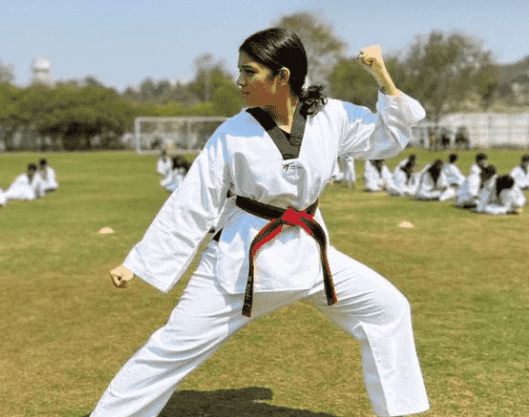
The referee is a key component of any Taekwondo match. They are responsible for ensuring that the rules are followed, that the match is fair, and that the athletes are safe. The referee is also responsible for calling out penalties and for stopping the match if a fighter is injured. The referee is a critical component of any match, and understanding their role is a key part of mastering the sport, which is why this is a crucial entry on our list of the Top 10 Taekwondo Sparring Rules.
The referee is a trusted and respected figure in the world of Taekwondo. They are responsible for ensuring that the match is fair and that the athletes are safe. The referee is a critical component of any match, and understanding their role is a key part of mastering the sport. This is an essential entry on our list of the Top 10 Taekwondo Sparring Rules. The role of the referee is a key element of the Top 10 Taekwondo Sparring Rules.
| Stat | A referee’s decision can be challenged by a coach, but they must use a video review system to do so. |
3. The Role of the Corner Judge
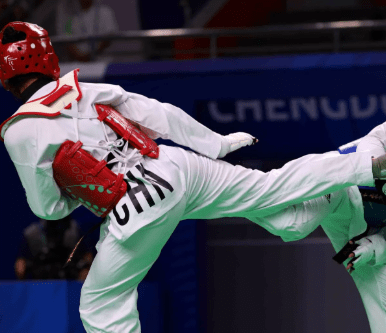
The corner judge is a key component of any Taekwondo match. They are responsible for assisting the referee and for ensuring that the match is fair. The corner judge is also responsible for calling out penalties and for stopping the match if a fighter is injured. The corner judge is a critical component of any match, and understanding their role is a key part of mastering the sport, which is why this is a crucial entry on our list of the Top 10 Taekwondo Sparring Rules.
The corner judge is a trusted and respected figure in the world of Taekwondo. They are responsible for ensuring that the match is fair and that the athletes are safe. The corner judge is a critical component of any match, and understanding their role is a key part of mastering the sport. This is an essential entry on our list of the Top 10 Taekwondo Sparring Rules. The role of the corner judge is a key element of the Top 10 Taekwondo Sparring Rules.
| Stat | There are four corner judges in a Taekwondo match, and their decisions can be reviewed by the referee. |
2. The Golden Point Round
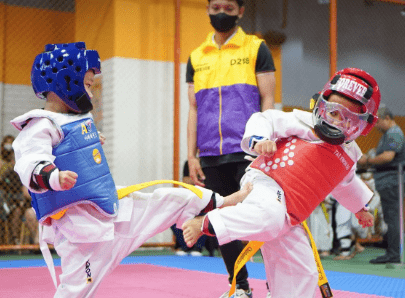
The Golden Point Round is a key component of any Taekwondo match that is tied at the end of the three rounds. It is a one-minute round where the first fighter to score a point wins the match. The Golden Point Round is a test of a fighter’s endurance and their ability to maintain their focus for the entire duration. The Golden Point Round is a critical component of any match, and understanding it is a key part of mastering the sport, which is why this is a crucial entry on our list of the Top 10 Taekwondo Sparring Rules.
The Golden Point Round is designed to be a test of a fighter’s skill and their ability to adapt to a changing match. A fighter may be down in the first round but can come back to win in the Golden Point Round. The Golden Point Round is a critical component of any match, and understanding it is a key part of mastering the sport. This is an essential entry on our list of the Top 10 Taekwondo Sparring Rules. The drama of the Golden Point Round is a defining element of the Top 10 Taekwondo Sparring Rules.
| Stat | The Golden Point Round is a sudden-death round, where the first fighter to score a point wins the match. |
1. The Head Kick
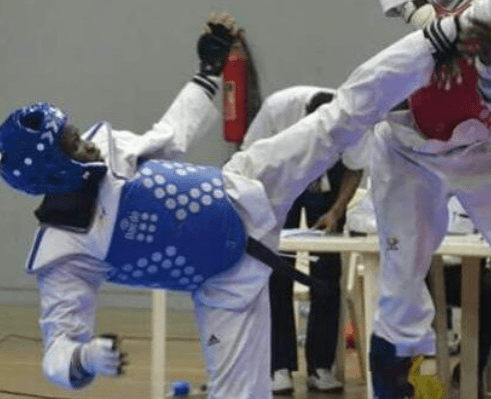
The head kick is the most powerful and effective technique in Taekwondo sparring. A kick to the head is worth three points, and a spinning kick to the head is worth five points. The head kick is a high-risk, high-reward attack, as it can be a game-changer. The ability to perform a powerful and accurate head kick is a hallmark of a skilled Taekwondo practitioner, which is why this is a crucial entry on our list of the Top 10 Taekwondo Sparring Rules.
The head kick is a key component of any match, and understanding it is a key part of mastering the sport. A fighter who is constantly striking an opponent’s head will be a tough opponent to defeat. The head kick is a critical component of any match, and understanding it is a key part of mastering the sport. This is an essential entry on our list of the Top 10 Taekwondo Sparring Rules. The power and effectiveness of the head kick are a defining element of the Top 10 Taekwondo Sparring Rules.
| Stat | The head kick is the most common way to score a knockout in competitive Taekwondo |
FAQs:
Q1: What is the purpose of the electronic protectors?
A1: The electronic protectors are used to ensure objective and accurate scoring, a key feature of modern Taekwondo and a major point in our list of Top 10 Taekwondo Sparring Rules.
Q2: What is the most common penalty in Taekwondo sparring?
A2: The most common penalty is a Kyong-go for avoiding a fight, which is a sign of a fighter who is not willing to engage, a fact highlighted in our list of Top 10 Taekwondo Sparring Rules.
Q3: What is the most effective way to score points?
A3: The most effective way to score points is with a head kick, which is worth three points and a key part of any winning strategy, a fact highlighted in our list of Top 10 Taekwondo Sparring Rules.
Read More :

